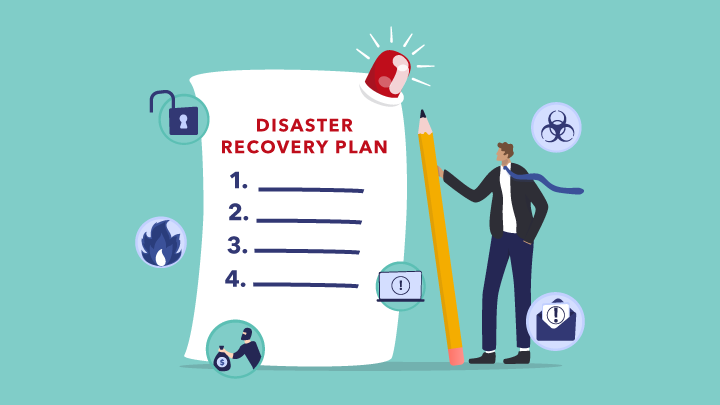In 2020, Hurricane Douglas served as a reminder of the physical vulnerabilities we face in Hawaiʻi. Every hurricane season—from June to November in the Central Pacific—we’re reminded to stock up on emergency supplies and revisit our family safety plans. Just as we prepare at home for natural disasters, we must also prepare at work.
IT infrastructures are particularly vulnerable in the face of disasters, which are defined as any disruptive event, natural or man-made. Examples of natural disasters include hurricanes, floods, earthquakes, and tsunamis. Examples of man-made disasters include cyberattacks, hazardous material releases, and acts of terrorism.
Regardless of what form a disaster takes, the result is downtime, which can be remarkably costly and detrimental. A 2022 report from Veeam surveying nearly 3,400 medium and large organizations revealed that the average cost of downtime is $1,467 per minute, as estimated by the organizations’ IT decision makers—that’s just over $88,000 every hour. This is where disaster recovery comes in to limit downtime and get operations back up and running.
While it’s impossible to predict when or where the next disaster will occur, companies can prepare and have the peace of mind that comes from proactively assessing the risks and taking the following steps to mitigate them.
What is Disaster Recovery?
Disaster recovery (DR) encompasses an organization’s methods of restoring its IT infrastructure and operations after a disruptive event, such as a hurricane or cyberattack. DR is a crucial segment of business continuity that protects companies’ productivity, revenues, and reputations.
Storms present a variety of threats to IT infrastructure, including the risk of hardware being destroyed by wind or water, and data loss. Power outages can impede access to vital data such as health information, financial data, and the ability to transact in real-time. Not being able to communicate with employees or customers equates to countless hours of lost productivity.
Similarly, a cyberattack can have an equally devastating impact, holding access to data and operations for ransom, or infiltrating sensitive files in such a way that a company’s clients are impacted. Disaster recovery addresses these risks and vulnerabilities.
Building a DR Plan
Having a solid plan in place for navigating a catastrophic event will make or break your recovery capabilities. The five key components of a DR plan are:
- Risk assessment. Start by analyzing potential hazards, their associated impacts, and the measures and resources needed in response.
- Roles and responsibilities. Identify key employees and inform them on their responsibilities. Their duties can include anything from logging damages to answering customer calls.
- Asset inventory. Create an inventory of all hardware, software, and applications in the organization. Then, sort the list by the items’ criticality to operations.
- Backup procedures. Catalog the backups required and how they should be implemented, down to the details of their frequencies and recovery time objectives (RTO). RTOs define the maximum amount of downtime allowable after a disaster.
- Testing and optimization. Regularly test and optimize the plan to ensure it’s always updated and compatible with your business as it grows and changes.
It takes time to build, test, and implement a plan, so proactive preparation is key. With hurricane season upon us and the current looming threats related to regional and global crises, now is the perfect time to protect your data against both natural and man-made disasters. As threats unfold and organizations evolve, DR and business continuity must adapt to the ever-changing needs of a business. Pacxa’s IT disaster recovery and business continuity services can help you mitigate risks, adjust plans, and keep your business running if disaster strikes. Contact us to start building your DR plan: https://pacxa.com/backup-dr/


